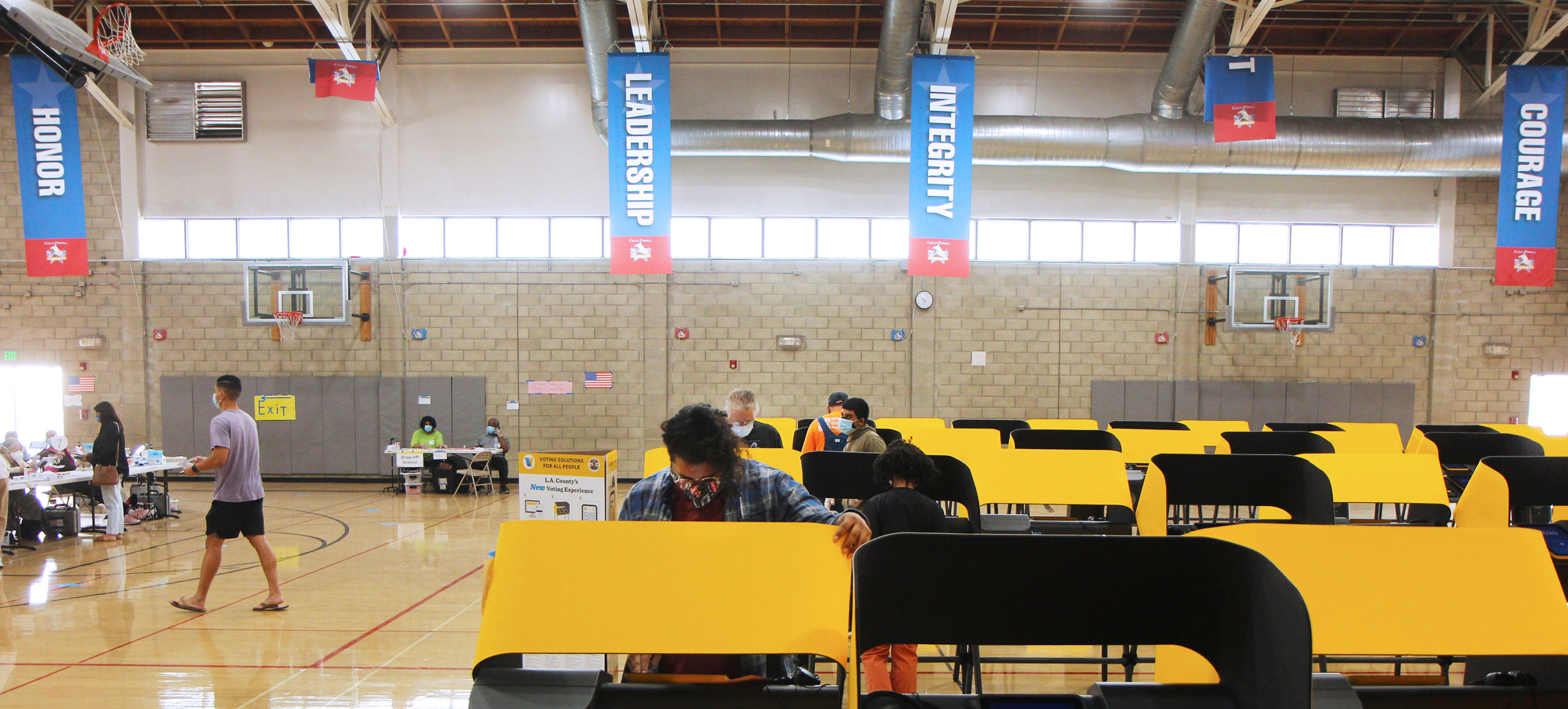Long Beach’s track record of dismal voter turnout in local elections made it one of the California cities that was forced by a 2015 state law to align its elections with the state to entice more people to cast ballots. However a ruling by the state supreme court in November has freed Long Beach and other charter cities to set their own rules, and now leaders have a decision to make.
Off-cycle elections have led to mayors being elected with less than 20% of registered voters casting a ballot, and state senators being sent to Sacramento with less than 10% participation.
Since the city has been forced to align with statewide elections, participation has been up significantly, with last year’s presidential election bringing almost 75% of registered voters to the polls.
Long Beach’s charter says that municipal primaries are held in April and runoff elections are held in June, however the city has contracted with Los Angeles County to administer its elections for the past few years and the next scheduled county election is in June 2022.
The November ruling in the case filed by the city of Redondo Beach sought to bring back the autonomy that charter cities have regarding their election dates, even if they had sagging election day turnout. But a return to past practices has several obstacles, and those issues are scheduled to be presented to the City Council Tuesday night.
Councilman Daryl Supernaw, who chairs the the Government, Personnel and Elections Committee, said that this kind of presentation would normally go to a committee hearing first, but the city is under a deadline to determine its course because of requirements related to Census data.
“It’s an important enough topic so I wanted to have the entire council hear it as soon as possible,” Supernaw said.
The council isn’t expected to take action Tuesday but could start discussions on what the future of city elections look like.
Because of the Redondo Beach ruling, the city could return to an April/June election cycle, but a memo from the city attorney’s office said that the largest impediment to doing that is the fact that Census data hasn’t been turned over to cities yet, which means the city’s redistricting commission can’t begin its work to redraw council district lines.
Deputy City Attorney Amy Webber said that the hold-up with the Census data has created pressure for the commission because the county requires new district lines to be submitted 180 days before an election. The process, which usually wraps up in July, stretched into mid-October because of the pandemic.
In order to have an April election, new district lines would have to be submitted by October and Census data is currently projected to be released in September. The timeline likely would not allow for all the required public meetings and for the commission to draw and finalize the maps in time, Webber said.
“We couldn’t do an April election,” Webber said. “It’s physically impossible because we don’t have enough time.”
Webber said the city could try to conduct an April election with the old district boundaries, but she would not recommend that because it could lead to legal challenges if district populations are later found to be dramatically different. Webber said the city is hopeful the state will put out some guidance on the issue.
The City Council could look at changing the charter to realign the election dates going forward. The state is currently holding elections in June and November in non-presidential election years, and in March and November during presidential election cycles.
This would require voters to approve a ballot initiative to amend election dates, something that could be placed on the November 2022 ballot.
City Clerk Monique de La Garza said that it’s her understanding that the charter amendment would align the city with the state’s cycles, but ultimately it’s up to the City Council, which could choose the election months or decide to revert back to the current charter dates.
“It makes sense to me as an election official to align with the state because you don’t want to be always chasing election dates,” De La Garza said.
Putting the city on that cycle would skew local elections. Council districts with even numbers could have longer, more expensive campaigns because of the nearly eight months between primary and runoff elections.
Odd-numbered districts and citywide elections for offices like mayor and city prosecutor could be cheaper, and have lower turnout, but De La Garza said she thinks the citywide office races could bolster turnout for those elections.

